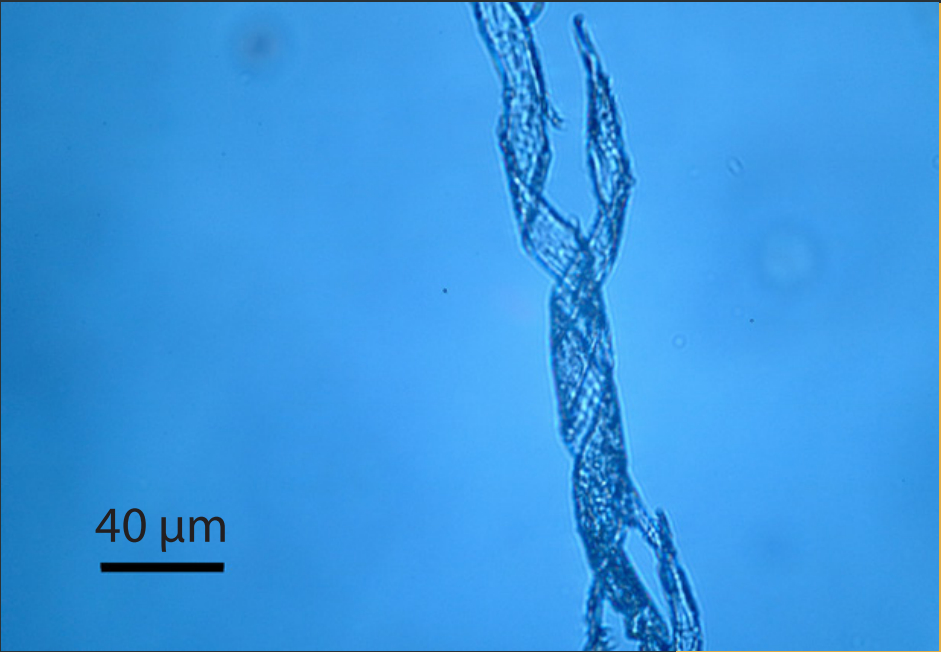Soft flexible nerves found in Triceratops bone

Researchers examining the microscopic canals in Triceratops bone found evidence of soft flexible nerve fibres and their unique wrapping. The bone was the occipital condyle, a round bony projection on the skull that connects to the spinal column.1 In vertebrates, the connective tissue around nerve fibres contains a network of protein collagen fibres. This collagen has a characteristic double helix structure, giving it a crosshatched appearance (see photos below left). This pattern is unique to nerve fibre sheaths.

After the bone minerals were dissolved away, the individual nerves were still soft, and they had what the researchers called “astonishing” flexibility.
This marks the very first discovery of any still-soft-and-flexible dinosaur nerve fragment. It caused the researchers to re-examine hundreds of slides from an earlier study involving samples from the same dinosaur’s horn, rib, frill, and vertebrae. They concluded the “possible presence” of nerves in all of these.

Skeptics in the past have tried to dismiss such discoveries as experimental oddities. But there are now so many instances of so-called ‘ancient soft tissue’ in the scientific literature, that the evidence can no longer be ignored. Dr Brian Thomas from ICR and Bob Enyart maintain an online list of “peer-reviewed journal articles on surviving endogenous biological material including tissue and DNA”.2 They list 116 such papers, 58 involving dinosaur remains. Twenty-seven (including this find) were in the past five years alone.
If these fossils were millions of years old, we would not expect to find any actual soft tissue or biomolecules. Yet these are being found, and in increasing numbers as more look for them. This only makes sense when we understand that the bones are only several thousand years old and were preserved as the result of Noah’s Flood.
References and notes
- Armitage, M., First report of peripheral nerves in bone from Triceratops horridus occipital condyle, Microscopy Today 29(2):20–25, Cambridge University Press, Mar 2021. The author is actively engaged in dinosaur soft tissue research—see dstri.org. Return to text.
- Thomas, B., Enyart, B., List of Biomaterial Fossil Papers (maintained). Last Accessed: 29 July 2021; tinyurl.com/4u34hex9. Return to text.


Readers’ comments
Comments are automatically closed 14 days after publication.